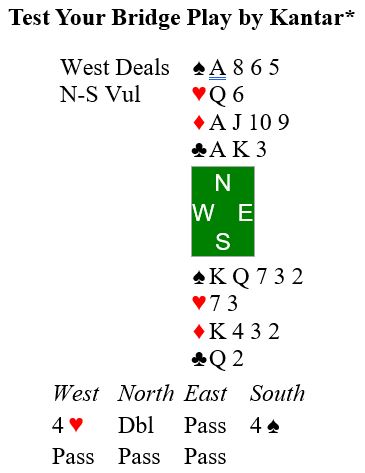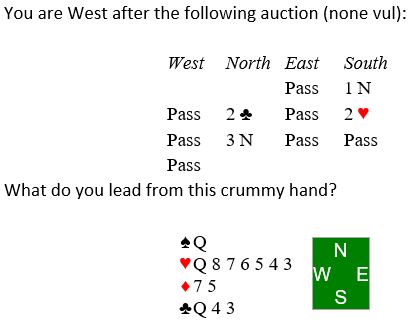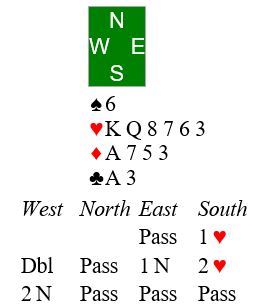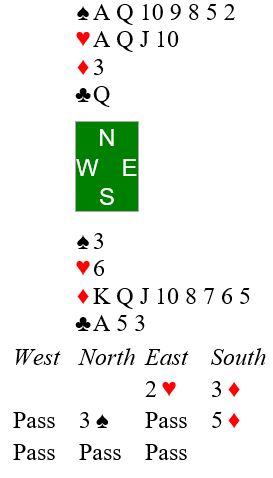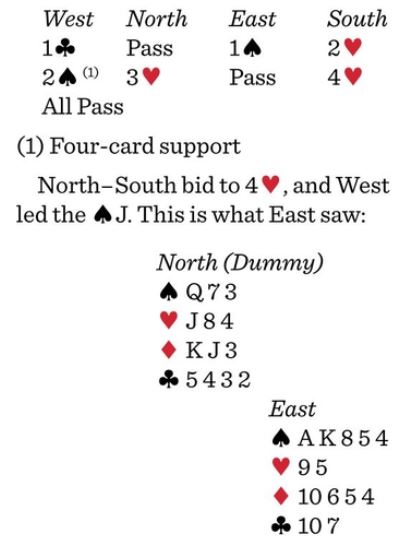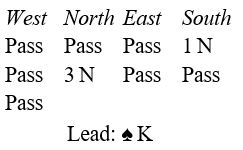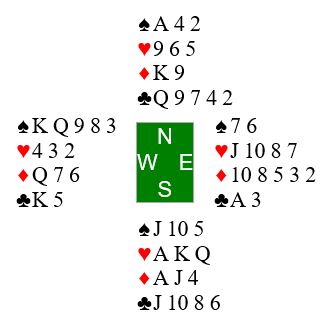Here is a hand I played at the club recently. I am in 3 spades on the bidding shown. I messed up the fundamentals. Look at my problem and see if you can do better.
What would be your plan? (Scroll down to see the plan I should have come up with.)
Visualizing the opponents’ hands: It looks like the king of hearts is top of a doubleton (North likely started with 7 hearts). Also, East is likely to be short in diamonds. Bottom line is that you may be able to develop a crossruff without either opponent being able to overruff. You need to cash the outside suit (clubs) before starting the crossruff. Also, you need to lead a diamond to void your hand.
Plan:
- Ruff the opening lead in dummy.
- Low club to your king.
- Low diamond toward dummy (maybe you will get lucky if West has the ace and does not play it). Assume West wins the ace and returns a trump (best defense).
- You win West’s trump lead in hand.
- Club to dummy’s ace, hoping it survives.
- Cash diamond king, discarding heart from hand.
- Ruff a diamond.
- Ruff a heart.
- Heart ruff.
10. Diamond ruff.
11. Ace of spades for your 10th trick.
Wasn’t that easy! (I pulled trumps prematurely)


